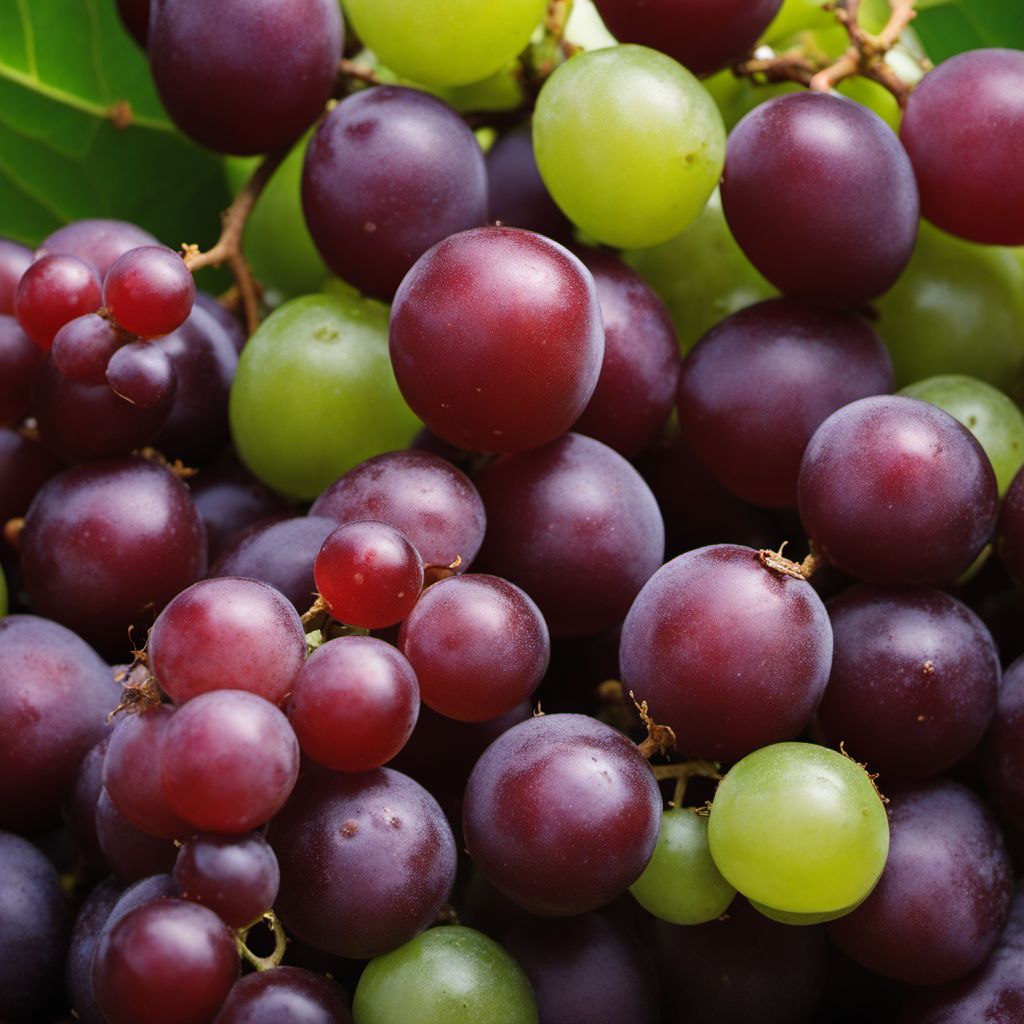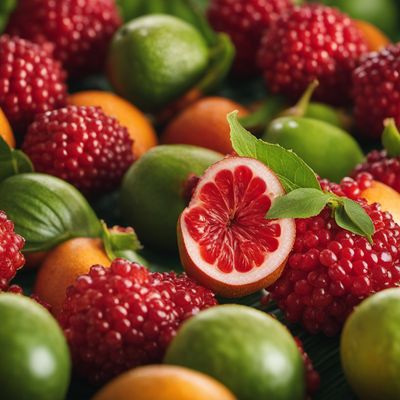
Ingredient
Jaboticabas
The Exotic Jewel of the Tropics: Exploring the Enchanting World of Jaboticabas
Jaboticabas are small, round berries that grow in clusters on the trunk and branches of the jaboticaba tree. They have a smooth, dark purple skin that is slightly thicker than that of a grape. When ripe, the flesh of the jaboticaba is juicy and translucent, encasing a few small seeds. The taste of jaboticabas is often described as a combination of grapes, plums, and cherries, with a hint of tartness. The texture is soft and jelly-like, similar to a grape, but with a slightly thicker skin.
Origins and history
Native to Brazil, jaboticabas have a long history in Brazilian cuisine and culture. They have been enjoyed for centuries by indigenous tribes and were later introduced to other parts of South America. The jaboticaba tree is highly valued for its fruit, and it is often found in backyards and gardens throughout Brazil. In addition to its culinary significance, jaboticabas also hold cultural importance, symbolizing abundance and prosperity in Brazilian folklore.
Nutritional information
Jaboticabas are a rich source of vitamin C, providing approximately 100% of the recommended daily intake in a single serving. They are also low in calories, with around 45 calories per 100 grams, making them a healthy and refreshing snack option.
Allergens
There are no known allergens associated with jaboticabas.
How to select
When selecting jaboticabas, look for fruits that have a deep purple color and a firm texture. Avoid any berries that are bruised, wrinkled, or have moldy spots. The skin should be smooth and free from blemishes. It is best to choose jaboticabas that are plump and have a slight give when gently squeezed.
Storage recommendations
Jaboticabas are best enjoyed fresh, but if you need to store them, place them in a breathable container or perforated bag in the refrigerator. They can be kept for up to 3-4 days. Avoid washing the berries until just before use to prevent moisture buildup, which can lead to spoilage.
How to produce
Jaboticaba trees can be grown from seeds or propagated through cuttings. They thrive in tropical and subtropical climates and require well-drained soil and plenty of sunlight. It takes several years for a jaboticaba tree to bear fruit, but once established, it can produce abundant harvests.
Preparation tips
To enjoy jaboticabas, simply wash them gently under cool water and remove any stems. They can be eaten whole, including the skin, or the skin can be easily peeled off if desired. Jaboticabas are delicious when eaten raw as a snack, added to fruit salads, used in desserts like pies and tarts, or even made into jams and jellies. Their vibrant color and unique flavor make them a beautiful and tasty addition to any dish.
Culinary uses
Jaboticabas are commonly used in Brazilian cuisine to make refreshing juices, jams, and liqueurs. They can also be used as a topping for ice cream or yogurt, incorporated into cakes and pastries, or added to salads for a burst of flavor. Their versatility allows them to be used in both sweet and savory dishes, making them a delightful ingredient to experiment with in the kitchen.
Availability
Jaboticabas are primarily cultivated in Brazil, but they can also be found in other tropical regions such as Florida and Hawaii. They are not widely available in most supermarkets but can be found in specialty stores or farmers markets in areas where they are grown.
More ingredients from this category » Browse all

Ambarellas
The Tropical Delight

Santols
The Tropical Delight: Exploring the Exotic Santols

Babacos
Exotic Delight: Babacos

Natal plums
The Exotic Gems: Natal Plums

Dracontomelon duperreanum fruits
The Exotic Delight: Dracontomelon Fruits

Carambolas
The Star of Tropical Delights: Carambolas Unveiled

Malay pommarosas
The Exotic Delight: Malay Pommarosas - A Tropical Twist for Your Taste Buds

Pommarosas
The Vibrant Pommarosas: A Burst of Tropical Flavor

Aonlas
The Tangy Delight: Exploring the Unique Flavors of Aonlas

Cashew apples
The Tropical Delight of Cashew Apples

Maprangs
The Exotic Tanginess of Maprangs

Bilimbis
Tropical Tang: Exploring the Unique Flavor of Bilimbis